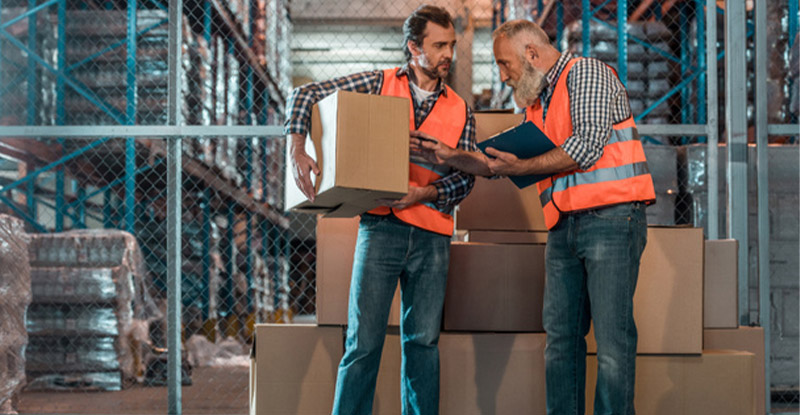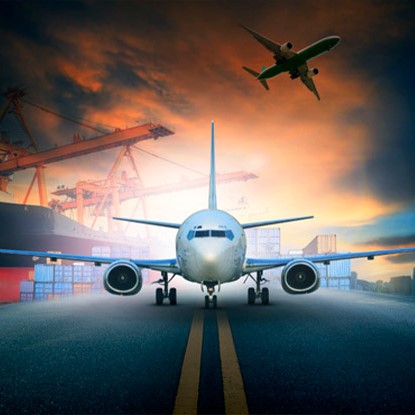Logistics Compliance: Document Automation Tips and Best Practices


Explore the transformative potential of logistics compliance document automation in our article. Discover how cutting-edge technologies streamline processes, ensure accuracy, and mitigate risks across the supply chain.
Taming the paperwork beast in the bustling world of logistics? Drowning in a sea of bills of lading, customs declarations, and certificates of origin? You’re not alone. Manual document handling in logistics is a notorious time-suck, riddled with errors and compliance headaches. Logistics compliance document automation comes to rescue, ready to revolutionize your processes and unleash a wave of efficiency.
Get ready to streamline workflows, improve accuracy, and watch your logistics operation soar to new heights of efficiency with our article.
Revolutionize Your Logistics Compliance with Artsyl Solutions!
Experience the power of Artsyl’s comprehensive suite of solutions – InvoiceAction, OrderAction, ArtsylPay, and docAlpha – to automate and streamline your logistics compliance document processes.
Book a demo now
Logistics compliance is the set of rules, regulations, and standards that govern the movement, storage, and handling of goods throughout the supply chain. As part of logistics accounting, it encompasses various aspects, including transportation, customs clearance, documentation, and safety regulations.
The main goal of logistics compliance is ensuring that businesses operate ethically, legally, and in accordance with industry standards.
The first cornerstone of logistics compliance is sticking to the transportation rules and laws. Compliance with transportation regulations involves adhering to laws and standards governing the movement of goods by air, sea, rail, or road. This includes requirements related to vehicle safety, driver qualifications, and hazardous materials transportation.
Customs compliance entails meeting the legal and procedural requirements set by customs authorities for importing and exporting goods across international borders. It involves proper documentation, tariff classification, valuation, and adherence to trade agreements and tariffs.
Logistics compliance also includes maintaining accurate and complete documentation throughout the supply chain process. This includes bills of lading, commercial invoices, packing lists, certificates of origin, and other relevant documents required for regulatory compliance and audit purpose.
Compliance with security and safety regulations involves implementing measures to protect goods from theft, damage, or tampering during transportation and storage. This includes adhering to security protocols, such as container seals, surveillance systems, and employee background checks.
Environmental compliance pertains to adhering to regulations related to the environmental impact of logistics operations, such as emissions standards, waste disposal, and sustainable practices.
Streamline Your Logistics Compliance Workflow with Intelligent Invoice Automation!
With InvoiceAction, you can automate tedious invoice compliance tasks, reduce errors, and ensure regulatory compliance across your logistics operations. Transform your compliance workflow and drive efficiency with Artsyl’s automation!
Book a demo now
Adhering to regulatory requirements is critical for businesses operating in the logistics and supply chain industry for several reasons. Compliance ensures smooth and efficient operations by reducing the risk of delays, disruptions, and regulatory interventions that could impact the flow of goods. Let’s explore the most important reasons that can affect your business.
First of all, non-compliance with regulations can result in fines, penalties, legal liabilities, and reputational damage for businesses. Compliance instills confidence and trust among customers, suppliers, and regulatory authorities, enhancing the reputation and credibility of businesses in the marketplace.
In addition, compliance helps businesses mitigate risks associated with security breaches, safety incidents, environmental violations, and other regulatory non-compliance issues.
Last but not least, logistics compliance with international regulations opens doors to global markets and trade opportunities, enabling businesses to expand their reach and competitiveness.
In summary, logistics compliance is essential for ensuring the integrity, efficiency, and sustainability of supply chain operations while mitigating risks and safeguarding businesses against regulatory challenges.
Logistics compliance document automation revolutionizes the way businesses manage their supply chains by leveraging technology to streamline and optimize compliance processes. It involves automating the creation, processing, and management of various documents required for international trade and transportation, such as customs declarations, bills of lading, and certificates of origin.
The importance of streamlining logistics compliance processes cannot be overstated in today’s global marketplace. With increasing regulations and scrutiny around trade compliance, businesses face immense pressure to ensure accuracy, transparency, and adherence to regulatory requirements.
Manual document processing methods are not only time-consuming but also prone to errors, delays, and compliance risks. By embracing logistics compliance document automation, businesses can improve efficiency, accuracy, and transparency in their supply chain operations.
In addition, automation reduces the reliance on manual data entry, minimizes the risk of human error, and enhances overall compliance with regulatory standards. Moreover, it enables real-time visibility into the movement of goods, facilitates faster decision-making, and strengthens relationships with customers and regulatory authorities alike.
As you can see, streamlining logistics compliance processes through automation is not just a matter of convenience; it’s a strategic imperative for businesses looking to thrive in today’s complex and highly regulated global trade environment. It empowers organizations to navigate regulatory complexities more effectively, mitigate compliance risks, and unlock new opportunities for growth and success.

Enhance your logistics compliance document automation capabilities with Artsyl’s intelligent order management solution. OrderAction leverages AI-driven technologies to automate order data extraction, validation, and processing, ensuring accuracy and compliance with regulatory requirements.
In today’s fast-paced and highly regulated global supply chain environment, logistics compliance is paramount for businesses to ensure smooth operations, minimize risks, and maintain competitive advantage. At the heart of effective logistics compliance lies automation – a transformative solution that revolutionizes the way businesses manage their compliance processes.
Document automation solutions leverage advanced technologies such as artificial intelligence (AI), machine learning (ML), and robotic process automation (RPA) to streamline and optimize the creation, processing, and management of logistics compliance documents. These solutions automate repetitive manual tasks, eliminate errors, and accelerate document workflows, enabling businesses to achieve unprecedented levels of efficiency and accuracy.
Document automation in logistics leverages advanced technologies such as artificial intelligence (AI), machine learning (ML), and robotic process automation (RPA) to streamline and optimize the creation, processing, and management of logistics compliance documents.
These solutions automate repetitive manual tasks, eliminate errors, and accelerate document workflows, enabling businesses to achieve unprecedented levels of efficiency and accuracy. No wonder that document automation brings a myriad of benefits to logistics compliance processes, revolutionizing the way businesses operate and ensuring adherence to regulatory requirements.
RELATED: ERP Software: Optimizing Business Processes
By automating document creation and data entry tasks, logistics document automation significantly reduces the risk of human errors and inconsistencies in compliance documentation.
In essence, logistics compliance automation plays a pivotal role in transforming logistics compliance processes, driving efficiency, accuracy, and agility across the supply chain.
By embracing automation solutions, businesses can navigate regulatory complexities with ease, mitigate compliance risks, and unlock new opportunities for growth and innovation in today’s dynamic business landscape.

Contact Us for an in-depth
product tour!
The Bill of Lading is a crucial document that serves as a contract between the shipper and carrier, detailing the shipment’s contents, destination, and terms of transportation. Automation of the BOL process ensures accuracy in documenting cargo details, carrier responsibilities, and consignee information, facilitating smooth cargo movement and tracking.
Commercial invoices provide a detailed breakdown of the goods being shipped, their value, and terms of sale. Automation of commercial invoices streamlines the invoicing process, ensures consistency in data entry, and minimizes errors in calculating duties, taxes, and fees associated with international trade transactions.
RELATED: Enhancing Data Capture with OCR: Key Techniques and Tools
Packing lists itemize the contents of each package or shipment, including quantities, descriptions, and weights of goods. Automation of packing lists enables businesses to generate standardized packing documents, reduce manual data entry errors, and ensure accuracy in packaging and shipping processes.
Certificates of Origin verify the country of origin of goods and may be required to qualify for preferential trade agreements or tariff benefits. Automation of certificates of origin simplifies the application process, ensures compliance with trade regulations, and expedites customs clearance by generating electronic certificates for submission to relevant authorities.
Customs declarations provide detailed information about the imported or exported goods, including their classification, value, and origin, for customs clearance purposes. Automation of customs declarations streamlines the submission process, facilitates data validation and accuracy checks, and enhances compliance with customs regulations to expedite clearance and reduce the risk of delays and penalties.
Automating these logistics compliance documents not only enhances efficiency and accuracy but also improves transparency, compliance, and traceability throughout the supply chain, enabling businesses to navigate regulatory complexities more effectively and mitigate compliance risks.
Achieve Seamless Logistics Compliance with Artsyl’s Integrated Platform!
Automate your logistics compliance document processes from end to end. Experience simplified workflows, reduced processing times, and enhanced compliance assurance with Artsyl’s comprehensive intelligent automation platform!
Book a demo now
A global logistics provider faced challenges with manual customs declaration processes. The manual entry of data led to errors, delays in clearance, and increased compliance risks. The company needed a solution to streamline customs declaration processes and ensure compliance with regulatory requirements.
This logistics provider implemented a customs declaration automation solution powered by AI and RPA technologies. The solution integrated with existing systems to automate data entry, validation, and submission processes for customs declarations.
The logistics document automation solution utilized machine learning algorithms to analyze and classify product data, ensuring accuracy in tariff classification and duty calculation.
RELATED: OCR Receipt Scanning in Manufacturing
With the automation solution in place, this global logistics provider achieved remarkable improvements in customs declaration processes:
This case study illustrates the transformative impact of logistics compliance automation on businesses, driving efficiency, accuracy, and compliance across the supply chain. By embracing automation solutions, companies can streamline processes, mitigate risks, and unlock new opportunities for growth and innovation in today’s dynamic logistics landscape.
By adhering to these best practices, businesses can maximize the benefits of logistics compliance document automation, mitigate risks, and ensure ongoing compliance with regulatory requirements.

These best practices empower organizations to stay ahead of regulatory changes, optimize automation processes, and drive sustainable growth in today’s dynamic logistics landscape.
With all the benefits, logistics document automation isn’t just about ticking boxes; it’s about unlocking strategic potential. By leveraging automated document processes, you can free up valuable time and resources, gain real-time visibility into your supply chain, and make data-driven decisions that boost compliance, reduce costs, and enhance customer satisfaction.
So, step into the future of logistics, embrace the power of automation, and witness your documentation woes become a distant memory. Remember, empowered by efficient processes and seamless compliance, your logistics journey can truly reach its full potential.
Take Control of Your Compliance Journey with Optimized Payments!
Empower your business to navigate regulatory complexities and achieve compliance excellence with ArtsylPay. Automate payment processing, ensure data accuracy, and maintain compliance
with regulatory standards.
Book a demo now
Document automation refers to the use of technology and software solutions to streamline the creation, processing, and management of documents within the logistics compliance framework. It automates repetitive manual tasks such as data entry, validation, and document routing, enhancing efficiency and accuracy while reducing reliance on paper-based processes.
Data extraction is the process of automatically identifying and capturing relevant information from documents, such as bills of lading, commercial invoices, and certificates of origin, using optical character recognition (OCR) and machine learning algorithms. Data extraction enables the extraction of key data points, such as product descriptions, quantities, and values, for further processing and validation within the logistics compliance ecosystem.
A compliance rules engine is a software component that enforces predefined rules, regulations, and standards governing logistics compliance processes. A compliance rules engine evaluates incoming documents and transactions against established compliance criteria, such as tariff classifications, export controls, and import regulations, to ensure adherence to regulatory requirements and mitigate compliance risks.